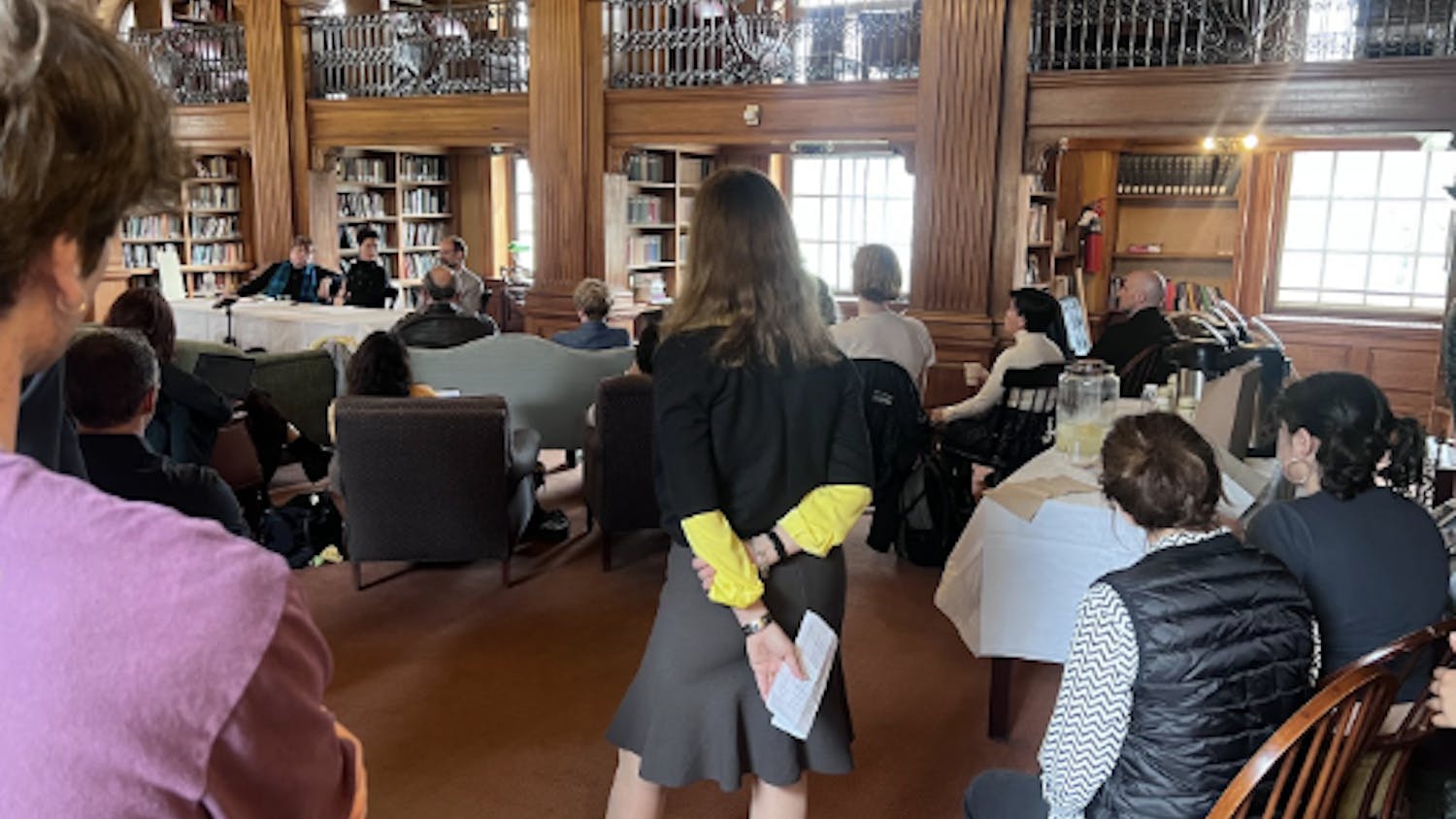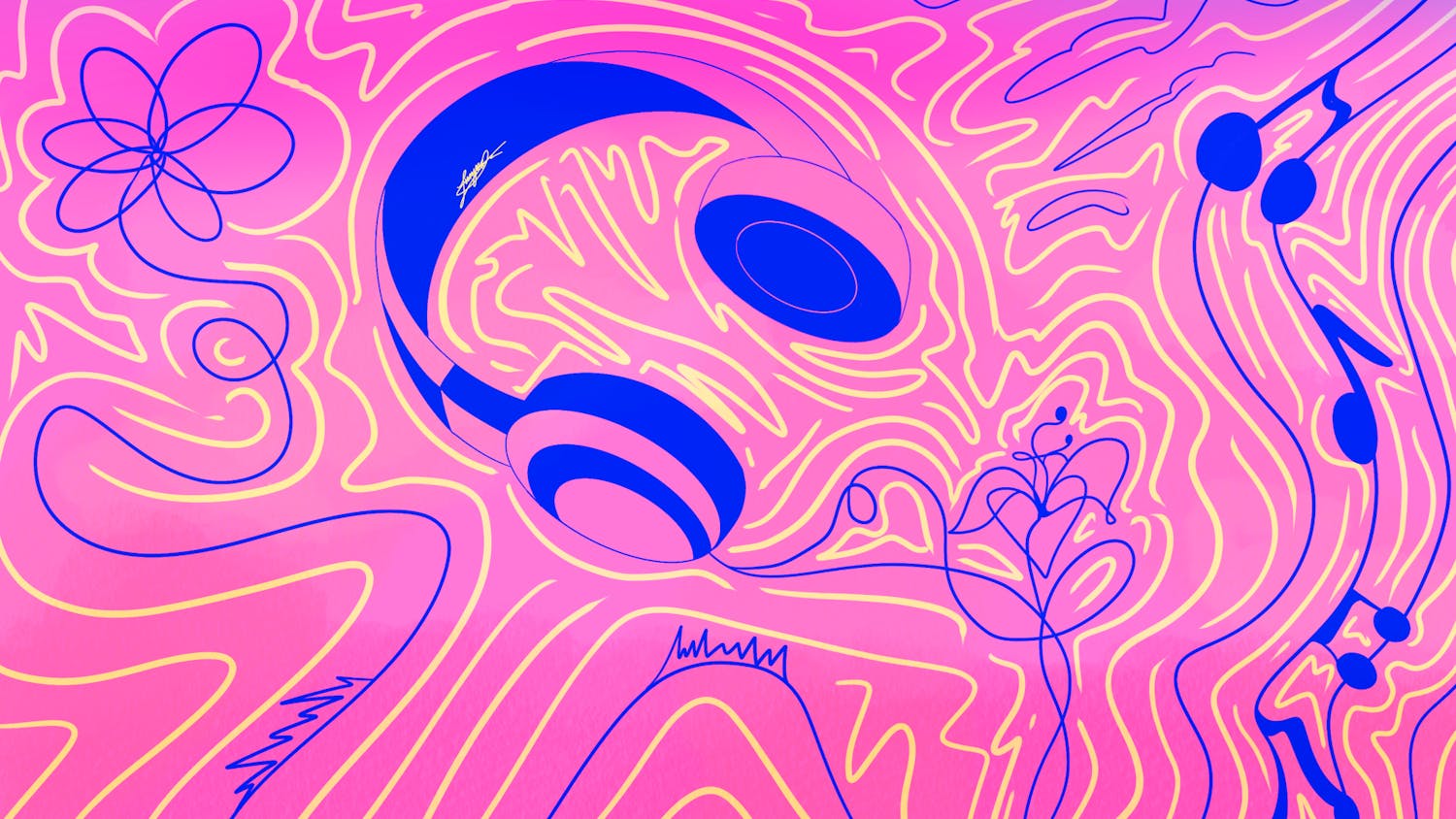Walking into Belgian artist Erik van Hove’s exhibit in the Hopkins Center’s Jaffe-Friede Gallery, one is taken aback by the intricacy of the large, mechanical looking piece that takes up most of the center of the gallery. A team of Moroccan craftsmen created the reproduction of the Mercedes V12 engine. The piece is a behemoth of wood, bone and engraved metal.
Van Hove’s exhibit, titled “The Craft of Art,” explores beauty, craftsmanship, individuality and their place in a throughly industrialized consumer society. His project is part of the Artist-in-Residence program, and van Hove serves as a liaison between the extremely skilled craftsman of Morocco and the contemporary art world.
The engine and the smaller car parts which are displayed alongside it are beautiful, elegant in design and intricately rendered. They serve as a testament to the noble dignity inherent to craftsmanship and vouch for the relevance and necessity of skilled hands in the face of technology and mass production, which pose a real threat to the workers commissioned by van Hove for this project.
Van Hove is no stranger to learned technical skill — he has worked repairing churches and has been formally trained as a calligrapher. When asked about the distinction made between contemporary art and the skilled craftsmanship found in places like Morocco he simply said that, “the distinction does not exist in Morocco, you create something because there is a need for it.”
He was inspired to recreate the engine while he was researching a unique car that claimed to be “100 percent Moroccan.” Upon further investigation he discovered that while the body of the car was indeed Moroccan-made, the engine was the famous Mercedes V12 engine, a well-known feat of German engineering. He decided to purchase a Mercedes V12 engine of his own, hauling it to a Moroccan mechanic in the back of his mother’s minivan. He commissioned the mechanic to completely dissemble the engine and gave the myriad parts to several local craftsman to serve as models for their handiwork.
Over the course of nine months the men completely recreated the individual components of the engine for reassembly. Van Hove also had the leather conveyer belt on the side of the engine embroidered by local Moroccan women. Since most female craftsman in Morocco are in the carpet business, and do not work in wood, he used embroidery to incorporate them into the project. They reassembled the handmade engine to prove that it all fit together like a real engine. The engine’s construction underscores the importance a functioning interior and the significance of tiny parts which seem inconsequential but which are crucial to the overall wholeness of the system.
The project gave the craftsman an opportunity and a challenge worthy of their advanced skill. The craftsmen primarily make ashtrays or lamps to sell to tourists even though they are capable of much more ambitious projects like this one, but even the lamps and ashtrays can be created more cheaply in an assembly line style of production.
Next on van Hove’s agenda is the motorbike industry in Morocco. Motorbikes, according to him, play a role in signifying social status in Morocco and thus are in high demand. He employed more local friends and craftsman to make a functioning motorbike out of handmade non-plastic materials.
The fully-functional motorbikes could provide jobs to the craftsmen and improve the daily life and transportation options of the customer. In his talk about the exhibit, van Hove also mentioned opportunities for craftsmanship in the wheelchair industry.
The backstory of the pieces is just as beautiful as the German-designed and Moroccan-rendered engine.
“I’m an engineer, so the look of the pieces are really appealing to me,” Daniel Jung ’18, an exhibit attendee said.
Jeffrey Fastow ’18 attended the exhibit after reading about van Hove in an art appreciation class.
The pieces can be appreciated from both a mechanical perspective and a purely artistic perspective, and the opening reception attracted people for different reasons.
The exhibit poses a question about what it means to practice conscientious consumption. Van Hove attempts to bring back craftsmanship for practical reasons that go beyond nostalgia. With this installation, van Hove actually proposes some proactive course of action in the face of a corporate existence, rather than merely lamenting it’s shortcomings.



